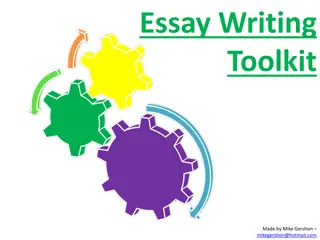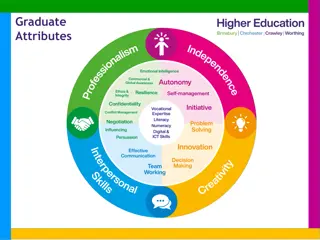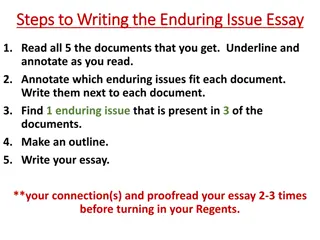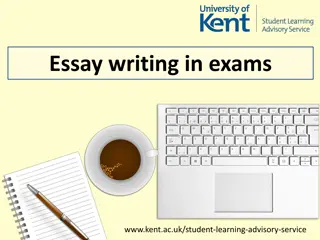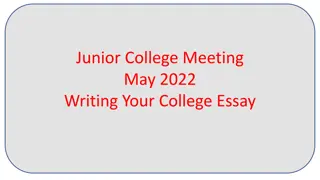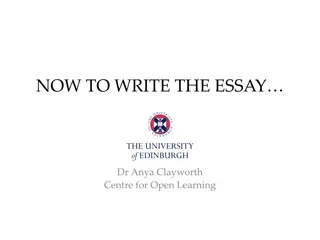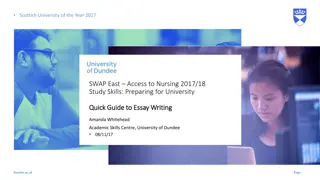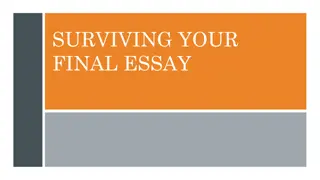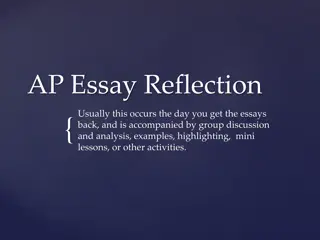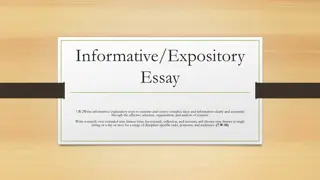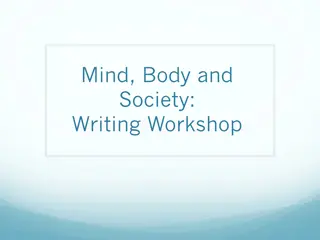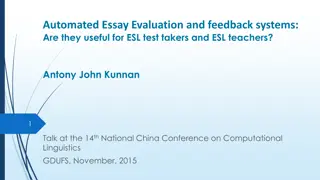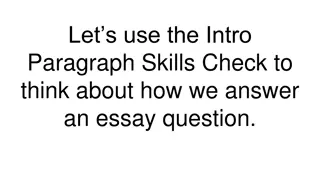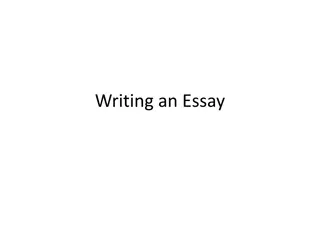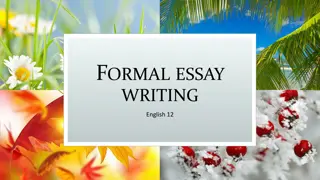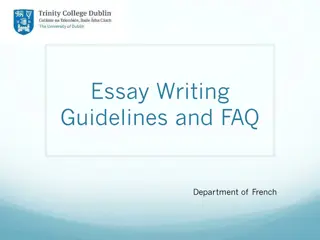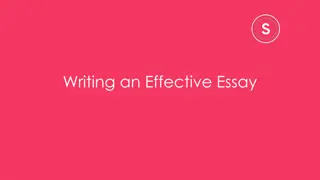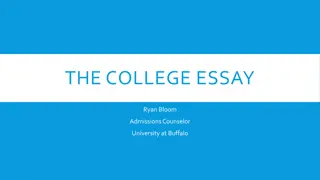Effective Essay Planning: Essential Steps for Success
Effective essay planning is crucial for a well-structured and coherent academic paper. This guide covers the importance of planning, benefits of outlines, steps to analyze assignments, practice questions, brainstorming techniques, and tips for overcoming writer's block. By following these steps, students can enhance their writing process and produce high-quality essays.
Download Presentation

Please find below an Image/Link to download the presentation.
The content on the website is provided AS IS for your information and personal use only. It may not be sold, licensed, or shared on other websites without obtaining consent from the author.If you encounter any issues during the download, it is possible that the publisher has removed the file from their server.
You are allowed to download the files provided on this website for personal or commercial use, subject to the condition that they are used lawfully. All files are the property of their respective owners.
The content on the website is provided AS IS for your information and personal use only. It may not be sold, licensed, or shared on other websites without obtaining consent from the author.
E N D
Presentation Transcript
HOW TO PLAN AN ESSAY
WHY PLAN? The German philosopher and writer Arnold Schopenhaur once advised: Write the way an architect builds, who first drafts his plan and designs every detail. In building a house, a carpenter never goes into the project blind. He or she has a plan to consult; all of the parts -- the foundation, the walls, the supporting beams, the ceiling -- will work together because of this plan. Without a plan, ceilings might fall in and doorways might collapse. Cheryl Sloan Wray www.writing-world.com
BENEFITS OF OUTLINES Keep you organized Encourage a consistent theme & connection to your thesis Professors can always tell if you planned before writing Allow you to easily move paragraphs and ideas around with intention.
STEP 1: ANALYZE THE ASSIGNMENT Look at the prompt with a critical eye What is the prompt asking you to do? Are there multiple questions? Are there other requirements (page length? Details in syllabus?) Do you need to do reading before hand? Recommend marking it up. Circle each question At the end of your outline, go back and double check to make sure you covered all the components
PRACTICE! What is your career goal? Why are you drawn to this particular career? Make sure you address the qualities you possess which make you a good candidate for this field.
STEP 2: BRAINSTORM If you have to do related reading, keep the question next to you while you read. Flag pages related to the question(s). Is this an opinion- based essay? Start with your ideas. List these out. Is this an essay based on a clear and straight- forward answer in your reading? Look for the short answer to the question first. You may need to summarize this in your own words. Jot down the smaller or supporting ideas too!
STEP 2: BRAINSTORM Is this essay a combination of your opinion and a clear-cut answer found in reading? Start by jotting down your opinion first. List all your ideas out. Then, go back and look for the short answer to the question in your reading. List out all the smaller of supporting evidence from the reading too.
FIGHTING WRITERS BLOCK Writers block comes up frequently in essays where we have to form our own opinions. You can fight writers block through a practice of asking yourself lots of analytical questions. Pretend you are a detective or investigator and you need to look at the assignment from every possible angle.
PRACTICE! What is your career goal? Why are you drawn to this particular career? Make sure you address the qualities you possess which make you a good candidate for this field. What are some questions we can ask ourselves to help us answer this? Think about looking at this from every angle!
PRACTICE! What is your career goal? Why are you drawn to this particular career? Make sure you address the qualities you possess which make you a good candidate for this field. Let s brainstorm!
THESIS STATEMENTS It can be valuable to at this stage draft a working thesis statement Your thesis statement is the main idea of your paper, is usually an argumentative statement, and answers the main question of the prompt. You will revise your thesis statement after you finish your outline.
EXAMPLE OF OUTLINE https://youtu.be/sp0MWYbLUFU
STEP 3: PLAN- YOUR OUTLINE Look at your brainstorm and ask yourself: Do some of your ideas naturally cluster together? How many clusters are there? Which ideas are more important or general? Which ones are more like supporting details? What order should the ideas be in? Let s put it in a structure format.
PRACTICE! Let s practice planning our outline
STEP 3: PLAN- ALTERNATIVES TO OUTLINES
STEP 4: USING QUOTES Quotes should support YOUR points in your paragraphs. Review Critical analysis Essay Template for example. Avoid dangling quotations!
CITATIONS 101 When you use quotes, you must do TWO citations In-text citation And a citation on a Works Cited or Reference page You should cite whether you use a direct quote, paraphrase, or just use someone s idea. Every type of source is cited differently- both in the essay and at the end. It s impossible to memorize all the rules, so follow a trusted website like PURDUE OWL.
MLA https://owl.english.purdue.edu/owl/resource/747/01/ In-text citation example of a single author of a book Wordsworth stated that Romantic poetry was marked by a "spontaneous overflow of powerful feelings" (263). Romantic poetry is characterized by the "spontaneous overflow of powerful feelings" (Wordsworth 263). Wordsworth extensively explored the role of emotion in the creative process (263). Works Cited Example
APA https://owl.english.purdue.edu/owl/resource/560/01/ In-text citation example According to Jones (1998), "Students often had difficulty using APA style, especially when it was their first time" (p. 199). Jones (1998) found "students often had difficulty using APA style" (p. 199); what implications does this have for teachers? Reference List example
WRAP UP Benefits of planning Step 1: Analyze the Assignment Step 2: Brainstorm Step 3: Plan (your outline) Step 4: Using quotes Citations


